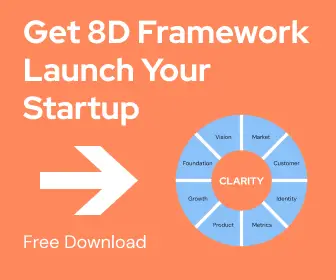The macro environment shapes the marketplace and should be a key guiding factor when developing a marketing strategy. Therefore, analyzing the macro environment carefully is crucial to business success. This enables the firm to identify both prospective opportunities and dangers or risks that may affect the organization. Let’s review how to do macro environment analysis in detail using the widely known PESTLE method.
Why and When to do Macro Environment Analysis
Macro environment analysis is a critical step at various stages in the business cycle. The forces in the macro environment, also referred to as DEPEST or DESTEP forces, shape the marketplace. It is one of the primary influences on both the firm’s ability to operate as well as on consumer demand. Therefore, understanding the specific macro environment the firm plans to operate in is absolutely crucial. This is where macro environment analysis comes into play.
Some businesses will hire analysts who have been trained to examine macro-environmental conditions and provide suggestions based on their findings. These analysts will examine broad macro-environmental influences such as politics, the economy, demography, and technology.
The examination of a company’s macro-environment is typically part of a wider global approach to strategic research. We also hear the phrase “environmental strategic diagnostic” a lot. The goal is straightforward: to develop a likely scenario for the organization in order to position itself, for example, adopting the strategic stance that will allow it to prosper.
There are several points in time when you would want to conduct macro environment analysis. The first one is rather obvious: Before entering a new market (whether it is a region or a different market in the home region), the company should analyze the macro environment in detail. It should particularly figure out the opportunities and risks that it can expect. The final decision to enter the market may very well stand or fall with the forces found in the macro environment.
However, analyzing the macro environment before entering a new market or region is not enough. The macro environment is subject to constant change. While some forces do not change much or at a very low rate (e.g., the socio-cultural environment), others may change rapidly (e.g., political or legal forces when there is a change in government or government strategy).
Therefore, the company should constantly monitor the macro environment. Depending on the size of the business, a part-time or full-time employee or even a whole department may be responsible for watching any developments closely and if necessary readjust the marketing strategy. This may often be included in broader role, for instance market research and planning. For instance, if there is a change in regulations visible, the company should consider adjustments to its products. If there is an economic downturn, the company may consider to develop entry-versions of its products and introduce discount schemes.
How to do Macro Environment Analysis
To analyze the macro environment, the PESTLE approach is commonly used. It may also be called PESTEL, DEPEST or DESTEP approach. Sometimes, you may also read PEST approach or any other subsets – in these cases, the analysis is limited to selective forces. Basically, all the approaches refer to going through the forces in the macro environment step-by-step and carefully investigating each of them.
Next to going through the six forces in the macro environment, companies may conduct SWOT analyses. A SWOT analysis will enable the organization to identify the risks and opportunities in its environment, as well as to position itself in its market by identifying its strengths and weaknesses.
In the following, let’s go through each of the forces and discuss some specific analyses you can do to understand the macro environment.
How to Analyze the Macro Environment using the PESTLE Method
The PESTLE method (or any other variation as described above) means going through the forces of the macro environment step-by-step.
Political
Let’s start with the political forces. To understand the political forces, you should consider a variety of variables. Depending on the country and the region you are looking at, specifically consider:
- Stability of government
- Potential upcoming changes to legislation
- Taxation
- Corruption
- Social protection
- Local government powers
- Labor laws
- Foreign trade policy (e.g., trade restrictions)
- Global influences
- Etc.
As you can see, the list of factors to consider is long. However, after analyzing the first few variables, you may quickly realize whether the country is attractive to do business in or not. In many cases, you will find developed economies to offer a favorable political environment, while developing countries can be more tricky.
Economic
In the economic environment, likewise many different variables should be considered. These may include for instance:
- Size of the economy and specific market
- Economic growth
- Exchange rates
- Interest rates
- Inflation rates
- Employment/ Unemployment rate
- Disposable income
- Spending patterns
- Consumer confidence
- Monetary policy
- Etc.
Luckily, analysis of the economic environment may be the easiest considering the quality of data available. For most countries, official economic statistics are available on national or even provincial level. Also, some economic statistics for smaller geographic units, such as municipalities, may be available.
Sociological
The sociological forces is primarily concerned with consumer behavior and attitudes. When analyzing sociological factors, you may consider:
- Population growth rate
- Age distribution
- Income distribution
- Literacy rates and educational attainment
- Lifestyle attitudes
- Health consciousness
- Values and culture
- Cultural barriers
- Etc.
The analysis of such factors often collides with limited data availability. In many cases, you may have to rely on qualitative data or even do some primary research on the specific factors you perceive as relevant to assess opportunities and risks for your business. Also, many of these factors can be quite complex. For instance, understanding the culture of a country or region can be a very complex enterprise. Luckily, there are some sources to help you on this, such as Hofstede’s Cultural Dimensions. A thorough understanding of a country’s culture can help you to prevent tapping into cultural blunders.
Technological
An examination of the technological environment may be very important to get an understanding of the opportunity to enter a new market. You should consider variables such as:
- Level of innovation
- R&D activity/ R&D spending
- Patent activity
- Telecommunications infrastructure
- Technology incentives
- Technological change
- Technological awareness
- Take-up rates
- Level of automation
- Etc.
For doing business in a region or country, the importance of the technological force should not be underestimated. For instance, imagine you consider setting up an online venture in a country where there is no sufficient bandwidth capacity available.
Legal
The legal environment may be a very decisive factor for the ability to operate in a country. It encompasses all the rules, regulations and public policies that may impact an organization’s ability to do business.
You should consider:
- Employment laws
- Health and safety regulations
- Discrimination laws
- Antitrust laws
- Consumer protection laws
- Copyright and patent laws
- Industry regulations
- Etc.
Environmental/ Ecological
The last force (but not the least important one!) is the environmental or ecological force in the macro environment. As you can imagine, this factor has actually grown in importance over the last years and will likely continue to do so. Here, we are looking at factors related to climate change, sustainable operations and pollution. Because of the growing importance, many organizations nowadays constantly monitor the natural environment, including NGOs, think tanks and watchdog groups.
In analyzing the environmental or ecological forces, you should consider:
- Climate
- Weather
- Environmental policies, regulations and restrictions
- Consumer attitudes
- Pressures from NGOs
- Recycling rates
- Pollution
- Sustainability movements
- Etc.
Conducting a SWOT Analysis to Understand the Macro Environment
After having reviewed the factors that should be investigated, let’s now see how to do macro environment analysis step-by-step. For this, we recommend to do a SWOT analysis, to get a full overview of the opportunities and threats in the macro environment, and match them with your company’s strengths and weaknesses.
Gather the Relevant Data
First of all, you should of course gather all the relevant data. However, don’t just start to collect everything! Otherwise, the analysis will take you ages. Instead, decide first which aspects you find most important for your business and create a list of things you want to analyze. Then, collect as much useful data on those points as you can find. Be aware to use reliable sources.
Identify the Opportunities
Once all of the data needed to conduct your analysis is gathered, the following step is to review each data point in detail. Your goal at this stage should be to discover any opportunities that these indicators may present. For instance, there might be a sizable market with supportive consumer attitudes and regulations that allow you to introduce your products.
Identify the Threats
Aside from understanding the potential opportunities that these forces may present, it is also critical to analyze potential threats to the organization. For example, if cultural values prohibit the consumption of certain food, you may not want to introduce products containing it. Or, if the political environment is unstable, is it too risky for you to invest?
Match Opportunities and Threats with your Strengths and Weaknesses
Considering opportunities and threats in the macro environment in isolation will not get you far. The critical step is to combine them with your own firm’s strengths and weaknesses to derive implications on the business strategy. The key is to combine strengths and opportunities to gain maximum advantage. At the same time, eliminate or overcome weaknesses and guard against or minimize threats.
Closing Words
The macro environment plays a key role in marketing. It can be the key decisive factor for the ability to do business in a region, country or market. Therefore, analyzing the macro environment is a critical step at various moments in the business cycle. Consider all the relevant forces by using the PESTLE method described above.








